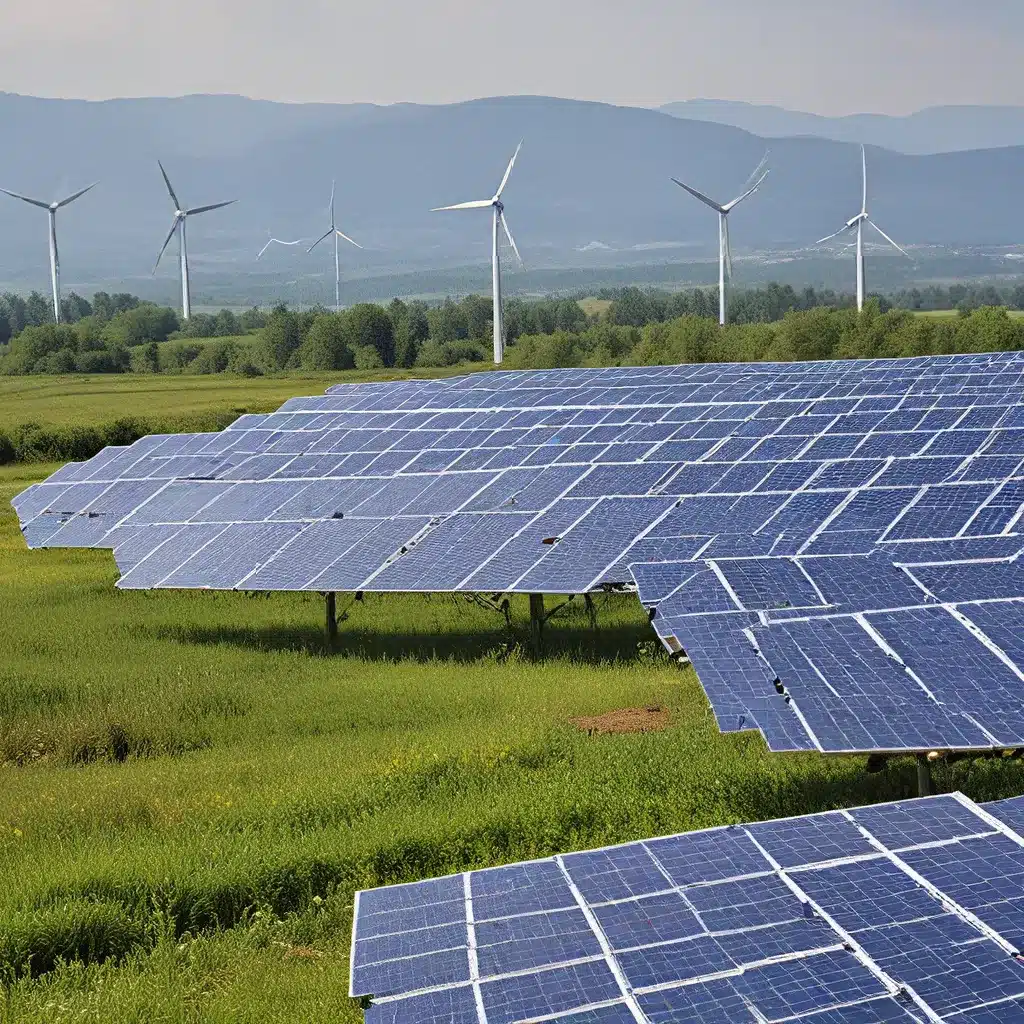
As the world grapples with the urgent need to address climate change, the transition to renewable energy has become a top priority for governments, businesses, and individuals alike. But the path to a sustainable energy future is paved with complex policy decisions and financing considerations that can make or break a renewable energy project.
As someone deeply passionate about the environment and the potential of renewable energy, I’ve been closely following the evolving landscape of renewable energy policy and financing. And let me tell you, it’s a fascinating and ever-changing field that requires a delicate balance of risk-taking, collaboration, and forward-thinking.
Navigating the Renewable Energy Financing Landscape
One of the biggest challenges facing the renewable energy sector is the sheer scale of investment required to make the transition a reality. We’re talking hundreds of billions of dollars in global investment, and that’s just to get the ball rolling. Governments, private investors, and multilateral institutions all have a crucial role to play in mobilizing the necessary capital.
But it’s not as simple as just throwing money at the problem. Careful planning and innovative financing mechanisms are essential to ensure that the investments are made in the right projects, in the right places, and with the right safeguards in place.
One key consideration is the need to address the growing risk of natural disasters and the impact they can have on renewable energy infrastructure. Extreme weather events, such as hurricanes, floods, and wildfires, can cause significant damage to solar panels, wind turbines, and other renewable energy assets.
This is where resilience planning and disaster mitigation come into play. States and local governments are exploring innovative financing mechanisms, such as green bonds, environmental impact bonds, and revolving loan funds, to help communities invest in infrastructure that can withstand the impacts of climate change.
The Role of Green Banks and Infrastructure Banks
Another important development in the renewable energy financing landscape is the emergence of green banks and infrastructure banks. These mission-driven institutions are designed to catalyze investments in clean energy and climate-resilient infrastructure by offering subsidized loans, loan guarantees, and other financial products that make these projects more attractive to private investors.
According to the International Energy Agency, public capital from green banks has been shown to catalyze more than twice the amount in private capital. This kind of public-private partnership is crucial for driving the scale of investment needed to transition to a renewable energy future.
But it’s not just about the money. These specialized financial institutions also provide technical assistance and risk-sharing mechanisms that can help smaller communities and underserved populations access the benefits of renewable energy.
Harnessing the Power of Policy
Of course, financing is only one piece of the puzzle. The policy landscape surrounding renewable energy is equally critical, and it’s an area where state and local governments have a lot of influence.
From building codes to land use planning, policymakers have a range of tools at their disposal to incentivize the adoption of renewable energy and strengthen the resilience of our communities.
For example, building codes that require the use of fire-resistant materials or hurricane-proof roofing can dramatically improve the ability of renewable energy infrastructure to withstand extreme weather events. And land use planning that encourages the development of renewable energy projects in low-risk areas can help minimize the impact of natural disasters on these critical assets.
But it’s not just about physical infrastructure. Policy can also play a crucial role in addressing the social and economic impacts of the transition to renewable energy. Disclosure requirements for flood risk or wildfire hazards can empower consumers to make informed decisions about where and how to invest in renewable energy.
The Power of Collaboration
One of the most exciting aspects of the renewable energy policy landscape is the growing emphasis on collaboration between different levels of government and across various sectors.
Firewinder, for example, is a company that specializes in renewable energy project financing, and they’ve seen firsthand the power of partnership in driving the renewable energy transition.
“We’ve worked with state and local governments, private investors, and even federal agencies to develop innovative financing solutions that address the unique needs of each community,” says the Firewinder team. “It’s not a one-size-fits-all approach, and that’s what makes it so exciting.”
Indeed, the most successful renewable energy projects often involve a diverse array of stakeholders, each bringing their own expertise and resources to the table. Collaboration is key to unlocking the full potential of renewable energy and building a more sustainable future.
Ongoing Research and Evolving Conclusions
Of course, the world of renewable energy policy and financing is constantly evolving, and there’s still a lot we have to learn. Researchers are continuously exploring new financing mechanisms, policy interventions, and approaches to building resilience, and the conclusions are likely to change as more data and insights become available.
As someone who is passionate about renewable energy, I encourage you to stay informed and engaged in this critical conversation. Attend local and state government meetings, connect with community organizations, and explore the wealth of resources available online to deepen your understanding of the issues and how you can get involved.
The path to a renewable energy future may not be easy, but with the right policies, financing, and collaboration, I believe we can create a more sustainable, resilient, and equitable world for generations to come.

